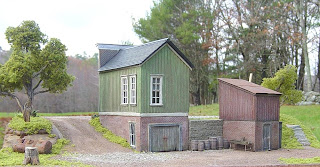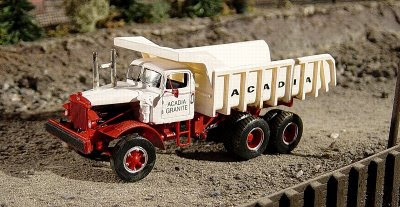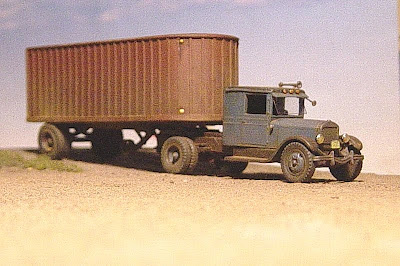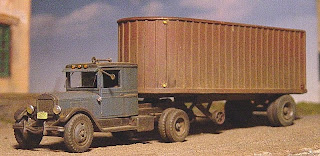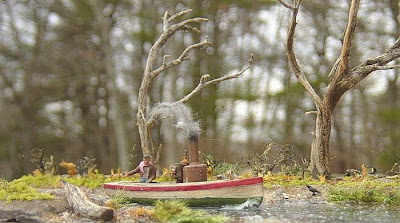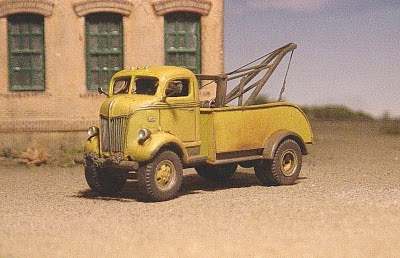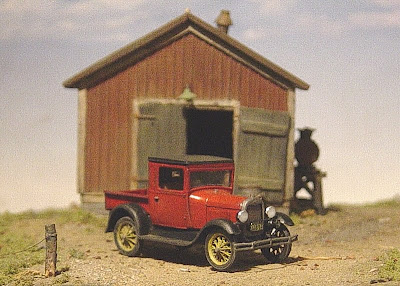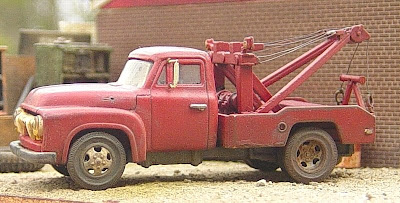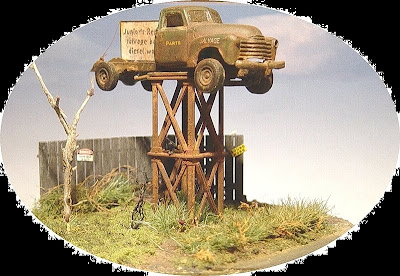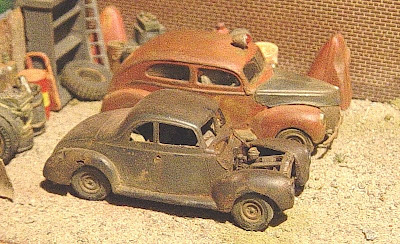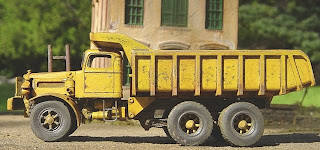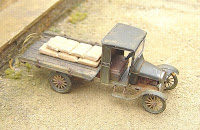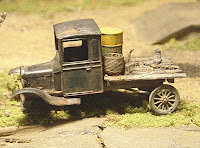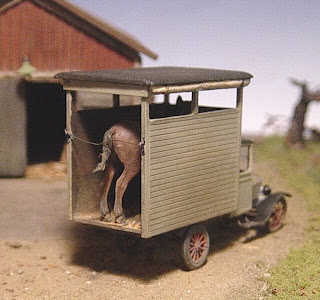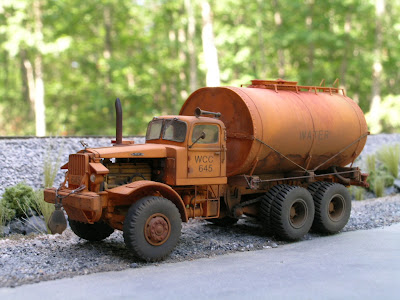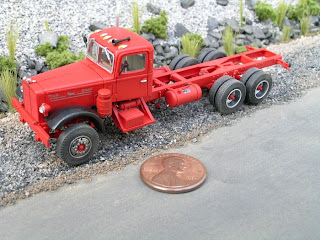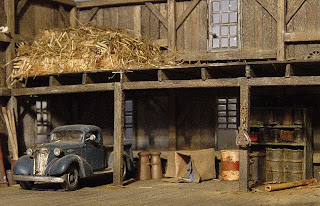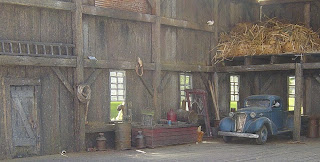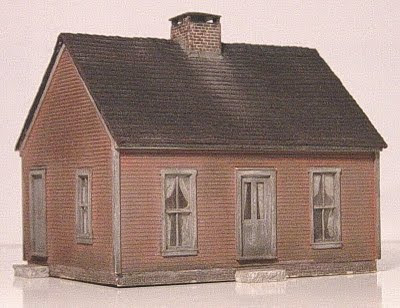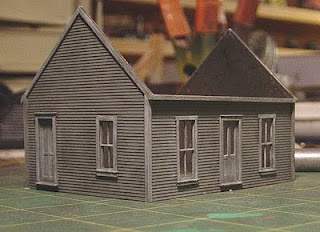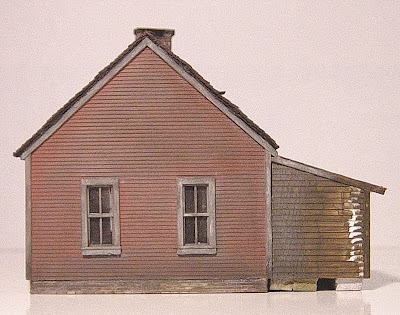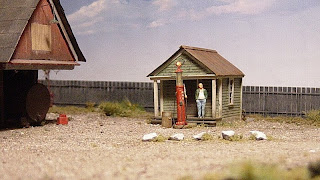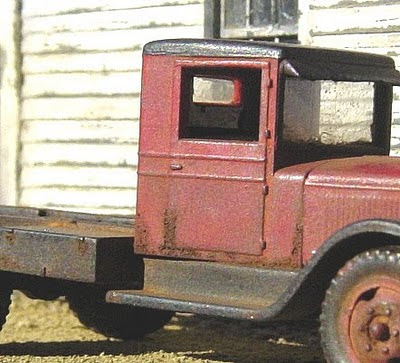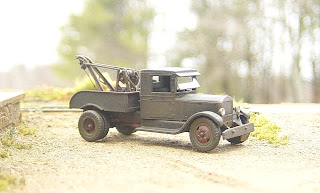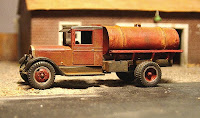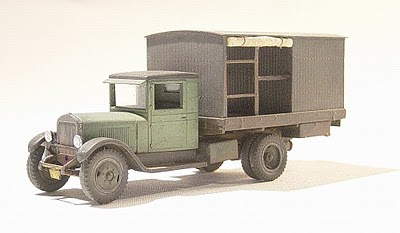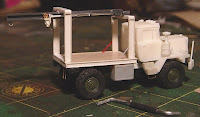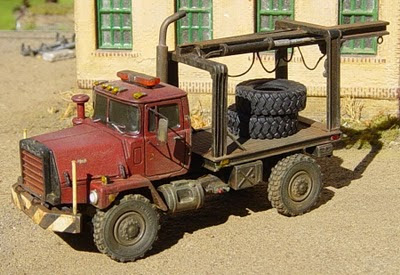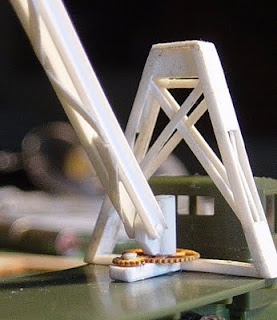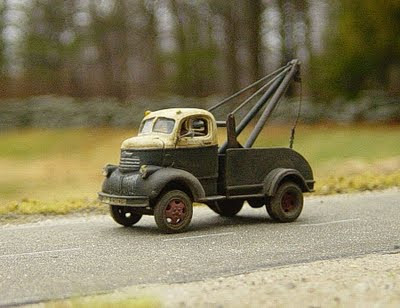![]()
It was recommended to me years ago when I got into this hobby that if I was going to do any of the Jordan Products kits that I do more than one in a row. There's a mindset that one needs to get into when building these little guys. I've found that it does help, in fact, to stay with the flow. These are inexpensive injected molded plastic kits with a terrific amount of detail for their size. Steam era guys love these models and they've been around for a long time. But building them correctly takes a good deal of patience and a steady hand (lay off the coffee for the day). I don't build them like the directions say to and my methods of painting them is not what most do either. I recently acquired several so let's walk through the process sans in-progress shots unfortunately (sorry!).
![]()
The first step is to look at the directions and familiarize yourself with the parts. Once you have a good general idea of where and how everything fits, clean off any flash and parting lines. I use a #11 blade to cut and scrape the parts clean from the sprue. This may be the most important step you take with these and great care must be taken not to damage anything during this process. Now, a good styrene plastic solvent glue is probably your best bet on these since some of the contact points are so tiny. Solvent glue actually welds the parts together where an ACC (super glue) would not give the strongest bond. Once entirely cleaned of excess plastic and pieces are shaped to what they need to be, a simple washing of the parts helps for a good strong connection at glue joints. I simply drop pieces in a cup with alcohol and pull them out as I go. They dry quickly and the alcohol seems to cut any mold release and oils from my fingers. It also washes away the fuzzies created by the scraping with a gentle scrub with an old, out-of-use toothbrush (emphasizing "old, out-of-use" here please).
![]()
Kit bashing these Jordan pieces are quite easy. The tanker body from the Model AA fits handily on the Model TT and the Model TT stake bed fits just as easily on the Model AA and so on. The Model TT has a nicely done flat head engine that can be exposed merely by leaving the sides of the hood off and can quickly be adapted for the Model AA. I also found that to change the look on these models may be a simple as cutting the doors off. The cab interior is detailed enough to make them quite presentable in this manner.
![]()
I glue sub-assemblies up such as the chassis with suspensions, or intricate bodies. And never attach wheels to anything until the very end. This is where I differ from the directions. They would have you gluing the entire model together and hand painting the details. I find the raw plastic to be (for lack of a better word) translucent looking. So I paint the sub-assemblies before final assembly careful not to get paint where gluing would be necessary for the final attachments. Again for instance, where the wheels attach to the axles or where the body connects to the chassis. This is difficult if you use an airbrush like I do for a lot of painting. There are several ways to avoid getting paint where you don't want it. I use a product called "blue tack" which is a very sticky putty. I pull a small chunk of it off and will mold it around axle ends. For areas like the top of the chassis where bodies connect, I will put a dab of rubber cement that can easily be pulled off after painting to reveal the raw plastic. I will now paint bodies and such with the airbrush. Wheels are usually painted by hand. I should mention that almost every model I build anymore will be painted with a coat of a dark brown color first, everything! My favorite choice of color is the acrylic PolyScale RR tie brown and yes it is difficult to airbrush but keep in mind that total coverage is not usually necessary at this step in the game.
![]()
This paint dries very quickly (one of the reasons it is tough to airbrush, it has a tendency to dry in the orifice of the airbrush as you work). Thinning (only very slightly!) with Windex helps this. When dry, I will put finish coats on. For the undercarriage, it isn't necessary to do anything else to it except, since most of the chassis sub-assembly has fenders attached, I paint the fenders by hand. Here's where a little trick I learned from Ken Hamilton's book comes in. For black fenders on these models (or any body part painted black for that matter), I paint the model with some old dirty brush thinner with a little Floquil engine black mixed in. Then I disconnect the paint cup while the model is still wet and blow it with just the air from the airbrush. Some of the brown undercoat will show through in a random pattern creating the nifty patina that the original paint on these real vintage vehicles have. It doesn't matter that some of the blackish mixture has seeped onto the undercarriage here so don't fret. I treat the cab and body the same if black is the color I want. If not, I paint them (again, usually with the airbrush) the color of choice. Caution should be taken not to apply too much paint put only enough paint on for minimal coverage. Some of the brown undercoat should be visible in places like panel lines and deep crevices. I might even say that the model isn't really painted but merely misted. This is the reason I do not use spray cans (rattle cans, fizz bombs, you choose what you want to call them) . They lay out entirely too much paint to get the look I want on these tiny models.
![]()
Let these enamels dry well. Since not a lot of paint has been applied, there should be no fear of lifting the acrylic brown undercoat and drying times are cut down as well. When dry, you can start final assembly. Peel off the masks you used and begin to detail paint by hand. I paint the radiators and anything else that one would call bright work (chrome) the RR tie brown. A little trick I learned from the talented Rod Reilly is to then use a soft graphite to give these areas the metal look. After painting the tires a dark gray (never black) I use a pencil to color the rim where it meets the rubber. Hit the radiator, door handles, hinges on tailgates, gas caps etc., any part that is to be bright metal with the pencil. It is so much easier to control than trying to paint silver and the look is that of aged chrome. The only exception for this technique is the recess in the headlights which I do paint silver. Caution should be taken from this point on not to touch these areas since the graphite from the pencil will easily be rubbed off. In fact during the process of applying washes much of this look disappears but retouching again afterwards is easy. I do not use the clear headlight lenses provided with the kit but place a drop of white wood glue carefully in the recess provided on most of the lights in their kits. I should add at this point that
this technique of doing headlights applies to models of all types.
![]()
At this stage you may have a very respectable model. But I can't leave well enough alone and feel the need to age the models even further. These next steps can be used with just about any kind of model here. So I start with a series of washes. My first wash on any color other than black is a panel wash with inexpensive craft paints (Folk Art, Ceramcoat, Apple Barrel) in a black mixed with windshield washer fluid. These dry completely flat which is a plus for the next phase, that of chalking. Often I will seal with dullcoat (again only misting) between coats of washes so the subsequent wash doesn't lift or mix with previous ones. Next color wash would be burnt umber followed by the final wash of raw sienna. I have several of the small plastic trays that Preiser figures come in that I use when doing washes. I fill each com
![]()
partment with clean washer fluid and keep a paper towel handy. In order to get the right amount of color in the washes, I will take a dollop of the craft paint and put it on the tray. With a dampened brush I pick up some of the color and mix it in the fluid and then apply it to the model. If too much color, I empty the contents of the brush on the paper towel, wick away the wash from the model, dip in some clean fluid and wash the model again. Trial and error is the process here and I may repeat this several times before I get the wash to look how I want it. I do not want drip marks to be seen and I can actually place undiluted paint on specific spots while the wash is still wet and concentrate the color in these areas without sharp delineations. Particular areas where this is effective are rust streaks and dark stains going down the sides of fuel tanks. While the area is still wet, place the color at the origin of a streak and drag it downwards vertically. The color will dissipate in the wet leaving no trace of a brush mark.
![]()
The next step in my finishing of these models uses artist chalks. I have not tried commercially available weathering powders and hope to soon but this is what I do in the mean time. Yellow ochre is my choice for dust and dirt in and around the bottom of the models especially the tire/wheel area. I use a light gray on the top of them sparingly to simulate faded paint. And rusted areas get a very light coating of real rust powder made with steel wool. Exhaust pipes get a light hit with Indian red.
Barely noticeable in most of the photos is a texture on the roof areas of the Model T's. This can be accomplished one of two ways. First and easiest is when you paint the roof (I prefer PolyScale Grimy Black) while the paint is still wet (move fast, remember this acrylic stuff dries fast) sprinkle some dark
![]()
gray or black powdered chalk into the wet paint. The second method is what I do most of the time but takes some time and effort to get right. Cut a small piece of toilet paper and separate the plies. Lay one ply on the roof and place a drop of a 50/50 mix of water/wood glue mixture on the paper.
![]()
Take a wetted brush and manipulate the paper over the casting creating small folds on the corners and making sure that it lays flat. When dry carefully cut the excess away following the lines of the model roof and paint. This method allows for a good textured look and also can be used to create damage to this area of the model if so desired.
Lastly, I will do turn signals (virtually non existent in the era most represented by the Jordan line but worth mentioning here) with yellow food coloring mixed with wood glue and red food coloring used for brake lights. I go back and check bright work with the pencil and touch up areas that have disappeared and wait for everything to dry and the models are ready to be photographed.
![]()
I scratch build much of what you see here like the WW1 ambulance above but that is for an entirely different post that I will attempt someday. My hope was to familiarize folks with the procedure I use to complete this form of 1/87 scale model outside of the manufacturers recommendations. Again I apologize for not showing any step by step photos but quite frankly, I get caught up in the build and simply forget to take pictures.


 Much more to my liking and frankly just a much better model is the Sheepscot IH R190 in a solid resin cab. This cab is prototypically correct and appears less toy like than the CMW offering. I scratch built the tow boom on this model.
Much more to my liking and frankly just a much better model is the Sheepscot IH R190 in a solid resin cab. This cab is prototypically correct and appears less toy like than the CMW offering. I scratch built the tow boom on this model.























